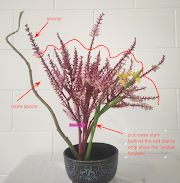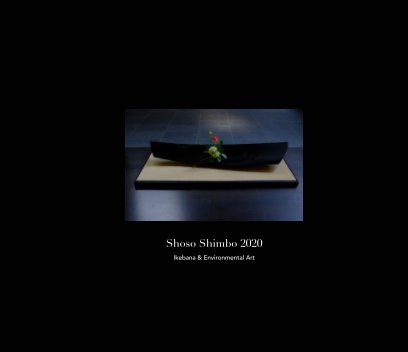Level 1.8: Colour (23 April 2022)
Colour 1 - Task
Ikebana Aesthetics Program - Zoom Ikebana DojoColour refers to the wavelengths of light. Colour theory is important but there is so much to learn about it. We cover only small basics of it in this course. Please remember that all ikebana masters are the masters of colours!
In this course we aim to create poetry in ikebana. The most important part of colour theory for ikebana practitioners is colour schemes. If there is no colour schemes in your design, there is no harmony and no poetry.
First, be familiar with colour wheel. It is easy to recognise warm & cool colours. Colours of the red-yellow side of the wheel are warm, while the colours on the blue-green sider are cool. Effects of those colours are obvious.

Next, let’s learn the basics of colour schemes. These are not formulas to follow, but are helpful knowledge for picking colours or flowers for your design.
a. Monochromatic colour schemes. They use variations of one colour, for instance light blue and dark blue.
b. Analogous colour schemes. They use several colours that are adjacent on the colour wheel.
c. Complementary colour schemes. Colours opposite each other on the colour wheel are called compliments. Colour schemes that use such colours are called complementary schemes. Red - green, blue - orange, yellow - violet are examples of complementary pairs.
See Session Notes Colour 1 for more about these colour schemes.
FAQ: Do we have to consider the colour of container, foliage or branches in using colour schemes?
Answer: It depends. If those factors play important roles in your design, the answer is YES. Black or white containers are often recommended for beginners, because they don’t have to pay much attention to effect of the colours of containers. It is not wise to expect beginners to pay attention to ALL colours involved. Focus on the colors of flowers first.
In colour 1 be familiar with the basic of colour schemes. We will explore more sophisticated colour schemes in Colour 2 & 3.
Objectives in Colour 1
1. Become familiar with using colour schemes.
2. Try an analogous colour scheme in your design. Choose 2 similar colours from the colour wheel.
3. Use moribana style (use kenzan, florist form or others for easy fixture) or Nageire style (see Session Notes Colour 1 for detailed Nageire techniques).
4. Observe the result and feel the effect of the colour scheme.
5. Advances students may consider using more sophisticated colour schemes.
What You Need
5. Advances students may consider using more sophisticated colour schemes.
What You Need

1. secateurs
2. kenzan or florist foam or wire packed container (see a task for Balance 1) for moribana style. You don't need these if you are going to try Nageire Style (sample image).
3. container - any include a cup.
4. flower materials:
- Lineal materials - poa poiformis or grass tree
- Leaves - syngonium podophullum
- Flowers - carnation & statice
How to Make It?
You will receive Session Notes Colour 1 with step-by-step instructions for making your arrangement after your payment is received. Our free video and the Session Notes will help you make your ikebana work.

























